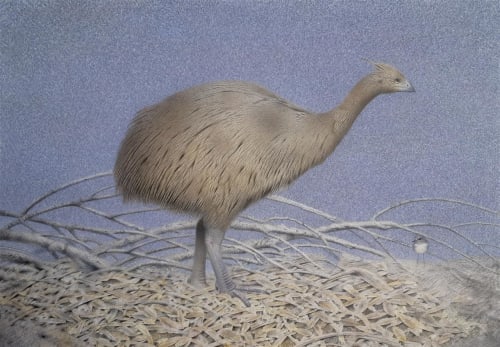"Maybe what we learn from seeing what we've lost is just another reminder that we need to look after what we've got."
Aotearoa New Zealand was once home to nine species of moa. Despite millions of years of existence, their disappearance from fossil and archaeological records sadly coincided with the arrival of the first humans in the 14th century. The resulting destruction of moa habitat and human hunting was responsible for their rapid demise and extinction.
Moa belong to a family of flightless birds referred to as Ratites. A group which includes ostriches, cassowary, rhea, kiwi and emus, as well as the South American tinamou, which are believed to be sister taxa of moa. They were truly extraordinary birds and would have been a significant aspect of New Zealand's natural environment when first seen by people.
Over many years Martinson has cooperated with Paleozoologist and moa expert Trevor Worthy and Alan Tennyson, curator of vertebrates at the Museum of NZ,Tepapa Tongarewa to gain a better understanding of how moa would have appeared and this exhibition represents a culmination of that understanding. His exhibition of watercolour paintings covers the nine species and represents what is presently known - how the birds may have appeared both structurally and in colouration. For example, two different morphological and colour types were evident among moa feathers. Some have been DNA typed to specific species, so there is some indication that Upland moa and Heavy-footed moa may have had areas of a greyish speckled appearance, analogous to the great spotted kiwi. Other feathers suggest the Giant moa and Stout-legged moa may have had a dull brownish streaky appearance.
How precisely moa would have looked visually may always have a degree of speculation about it, just as we can never know for sure how dinosaurs appeared to an observer. In that sense, this is very much a collaboration of science and art. The emphasis of the artist to capture movement, comparative size with living NZ species, the most important diagnostic features (specifically the head and bill) and the plumage, present the viewer with a contemporary overview of our most iconic of all endemic birds.

